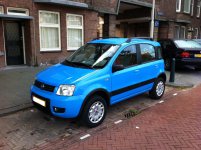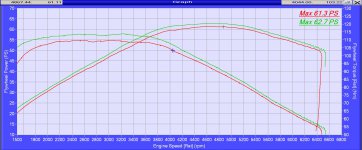Wow!! Glad to know that you tested the VC on a roller platform. Makes me like my Panda 4x4 even more.

I also have a very good update. I just got an official email answer from GKN Driveline about the following scenario we discussed:
So if the front wheels are on ice and the rears on tarmac, you bring up the clutch, the fronts spin momentarily, the VC locks and the car drives forward. If it can't drive forward - say it's roped to a 3-tonne Q7 stuck up to its sills in clag which the little Panda had just driven across for example - then the car simply won't pull forward, same as it you tried to tow a bus on dry tarmac with a Panda. I guess.
So no, I don't believe the VC, rear diff nor prop will be damaged, as your scenario was I think working backwards rather than forwards, if you see what I mean.
Phil
First, the gentleman from GKN Driveline suggest testing the VC by putting the front wheels on low-friction surface, such as wet steel or ice, and the rear wheels on high-friction surface. The car should be propelled forward by the rear wheels, albeit that the vehcile will accelerate less than when all wheels are on high-friction surface.
About the hypothetical scenario we discussed, I asked GKN Driveline this:
"Would the VC be damaged if under the following (hypothetical) scenario?
The front wheels are on a low-friction surface, such as ice or snow, the VC was activated but the vehicle could not be propelled forward (such as when towing a very heavy trailer, or because of other reasons). In another word, power was transmitted to the rear wheels by VC, but the rear wheels cannot turn on the high-friction surface and the vehicle stays stationary."
The answer from GKN is:
"I wouldn’t exaggerate it, but if done only for a short period of time (~ 1 … 2 seconds) this shouldn’t be a problem to test the functionality. When the VC unit heats up to a predefined temperature (based on air content inside), it gets into the so-called hump mode, and the torque increases rapidly - caused by direct metal contact of the plates.
This is an operating condition the unit should be able to handle (stall condition) a few times, but not permanently."
I hope this tip will help us maintain our Panda 4x4 and the VC unit.
I am yet to find a roller platform to test my 4x4.

Eric



